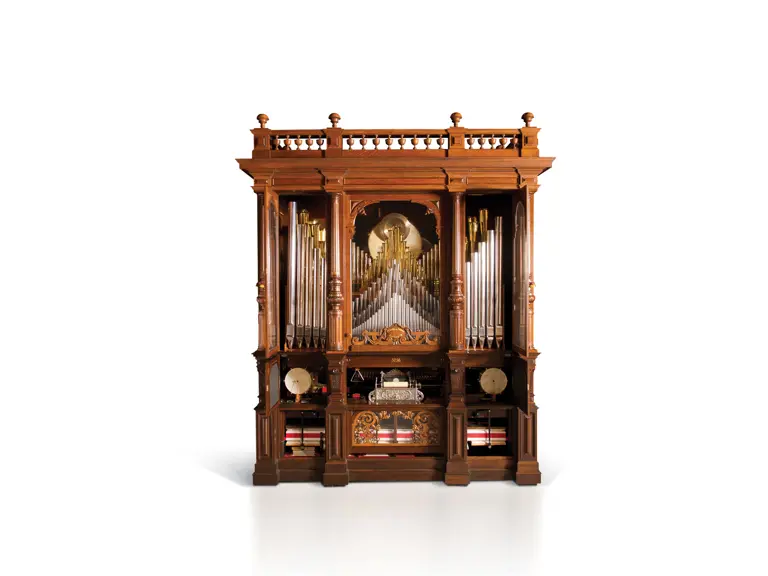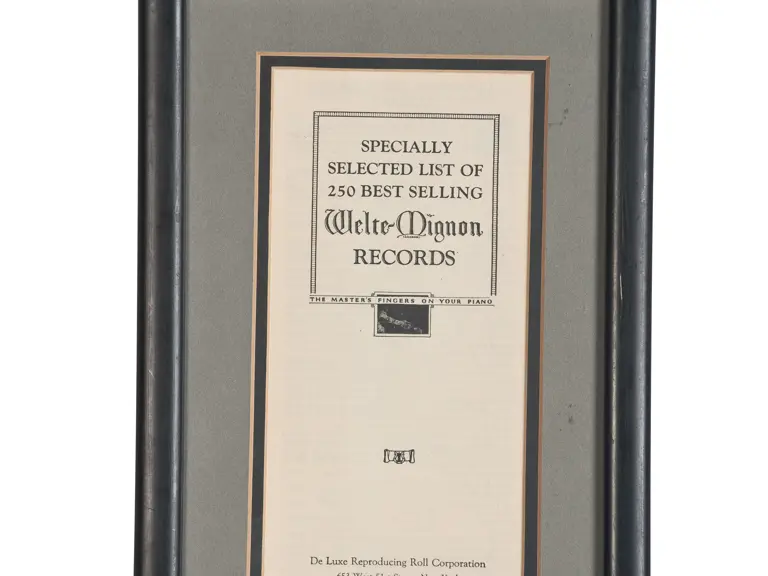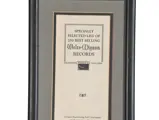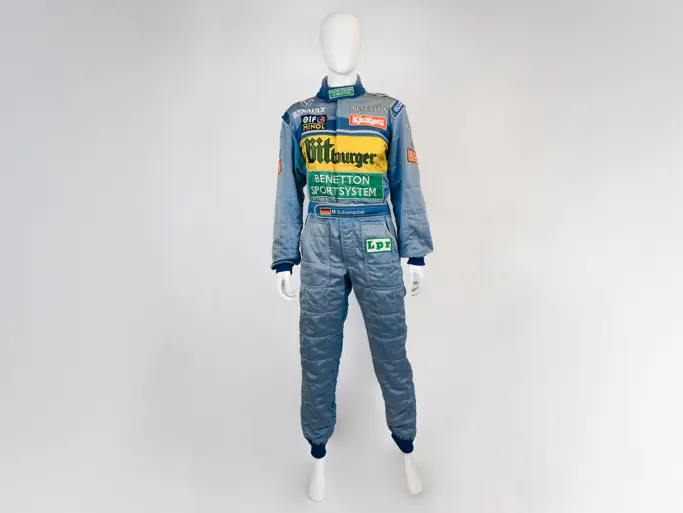 | Boca Raton, Florida
| Boca Raton, Florida
M. Welte & Söhne (Freiburg, Germany)
This stunning organ has the distinction of being the largest model of Welte's line of powerful brass band orchestrions. It was built in 1913 at an original cost of $4,716—an extraordinary sum of money in the early 20th century. It is the larger of the two remaining Wotans and was built specifically for use in the newly opened 35,000 square foot dance pavilion at "Bois Blanc Island" or simply "Bob-Lo Island" in the Detroit River. Akin to Coney Island, Bob-Lo Island Amusement Park first opened in 1898, with thousands of annual visitors taking one of two large ferry boats from Detroit and Southwestern Ontario. The dance hall in particular was designed by famed architect Albert Kahn, who is often considered "The Architect of Detroit." The result was a massive structure of steel and stone with a tall glass wall on one side and what was the largest dance floor in North America, said to be the second largest in the world.
The orchestrion was located on a second story balcony overlooking the dance floor. After the age of automatic musical instruments faded, the Welte remained in place, long unused, until its discovery by organ enthusiast Howard Hynne in 1963, who successfully lobbied Bob-Lo's board of directors to permit its sale. After acquisition by the Sanfilippo Collection in 1987, a complete, professional restoration was undertaken by John Hovancak and Dan Meuer of Dodgeville, Wisconsin, with design consultation by Art Reblitz. Metal replacement pipes were made by the same German firm that originally made them for Welte, wooden pipes were made by John Nolte, and although most of the original cabinet did not survive, the present cabinet was constructed by referencing the other remaining Wotan in the Nethercutt San Sylmar Collection. Work was completed in 1996. It contains 419 pipes, orchestra bells, a bass drum, tympani effect, two snare drums, cymbal and triangle. Two crankshafts drive the pumping bellows, which occupy nearly the entire bottom cabinet. Unquestionably one of the highlights of this collection and certainly a prized centerpiece of its future home, the opportunity to acquire a Welte Wotan will likely never come again, and the opportunity to listen to its supremely powerful music is a treat unto itself.
The Welte Wotan orchestrion is accompanied by a separate Welte-Mignon cabinet piano that was restored following the complete refurbishing of the Wotan and connected by a MIDI system, to add a piano to the Wotan's instrumentation. The combination of instruments plays three ways: 1) The Wotan plays 100-note Welte Piano Orchestrion rolls on the organ and piano; 2) A MIDI player plays digital files of Piano Orchestrion rolls on both instruments; and 3) The Mignon plays Red Welte T-100 reproducing piano rolls. The player mechanism in the Wotan is also fitted with internal electrical contacts so it can make digital recordings of the rolls while it plays them. This instrument includes libraries of 100-note Welte rolls, Red Welte rolls for the Welte-Mignon, a large library of MIDI files, a framed and matted Welte-Mignon advertisement and a framed and matted Welte-Mignon records list.
Reference: The Encyclopedia of Automatic Musical Instruments by Q. David Bowers (pg. 651) and The Golden Age of Automatic Musical Instruments by Arthur A. Reblitz (pg. 58-61). 168x192x72 inches.













